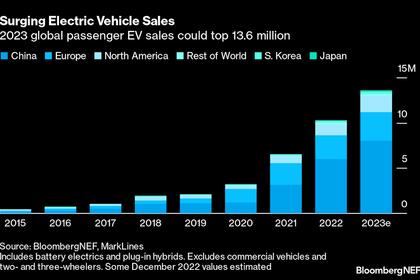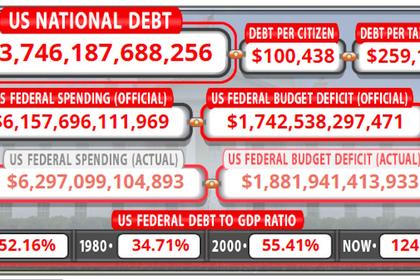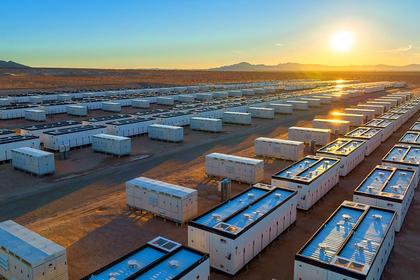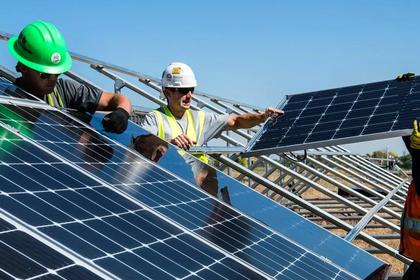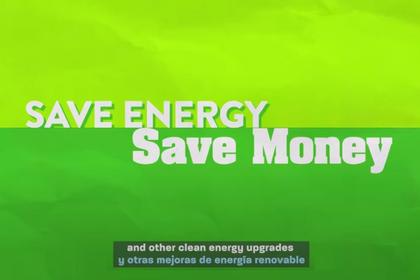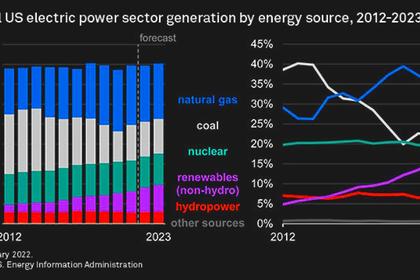
U.S. ENERGY INVESTMENT 2025: $44 BLN
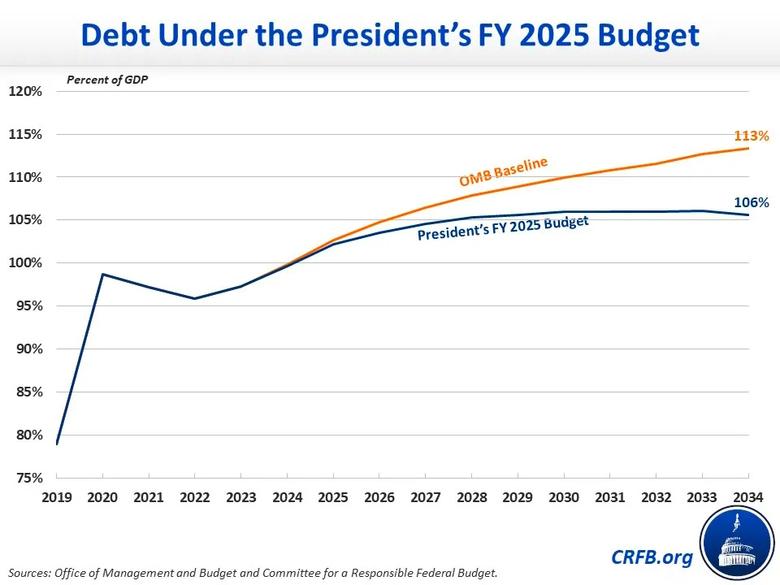
U.S. DOE - MARCH 11, 2024 - Statement by Secretary Granholm on the President's Fiscal Year 2025 Budget
WASHINGTON, D.C.-The Biden-Harris Administration today released the President’s Budget for Fiscal Year 2025. Following historic progress made since the President took office—with nearly 15 million jobs created and inflation down two-thirds—the Budget protects and builds on this progress by lowering costs for working families, protecting and strengthening Social Security and Medicare, investing in America and the American people, and reducing the deficit by cracking down on fraud, cutting wasteful spending, and making the wealthy and corporations pay their fair share. The Department of Energy’s (DOE) Budget makes historic investments that will help the country lay the foundation to build a clean and equitable energy economy and ensure the U.S. reaches net-zero emissions by 2050.
“President Biden’s budget request reflects his commitment to building a clean energy future that is made in America, powered by American workers,” said U.S. Secretary of Energy Jennifer M. Granholm. “The FY 2025 Budget provides the Department with critical resources to transform the President’s historic clean energy investments into reality—as we continue to lay the building blocks for an inclusive clean energy economy that lifts up all communities across the country, while tackling the climate crisis head-on.”
The DOE Budget requests $51 billion in discretionary budget authority for 2025, a $3.6 billion or 7.5 percent increase from the 2023 level. At DOE, the Budget will:
- Make the United States the leading nation for investing in clean energy. The Budget invests $1.6 billion to support clean energy workforce and infrastructure projects across the Nation, including: $385 million to weatherize and retrofit homes of low-income Americans; $95 million to electrify Tribal homes, provide technical assistance to advance Tribal energy projects, and transition Tribal colleges and universities to renewable energy; $113 million for the Office of Manufacturing and Energy Supply Chains to strengthen domestic clean energy supply chains, and $102 million to support utilities and State and local governments in building a grid that is more secure, reliable, resilient, and able to integrate electricity from clean energy sources. These investments, which complement and bolster the historic funding in the Bipartisan Infrastructure Law and Inflation Reduction Act, create good-paying jobs while driving progress toward the Administration’s climate goals, including producing carbon pollution-free electricity by 2035.
- Ensure investments provide economic and clean energy benefits in the communities that have been left behind. The Office of State and Community Energy Programs includes $385 million for the Weatherization Assistance Program to weatherize low-income homes. Weatherization programs work with local contractors and tradespeople to improve home performance, which boosts local employment and creates new job opportunities, while uplifting America's most vulnerable families by reducing their annual energy costs by approximately $372 per household. Similarly, the State Energy Program is requesting $70 million in FY 2025 for technical assistance to states, territories, and the District of Columbia to enhance energy security, advance state-led energy initiatives, and increase the affordability of energy. SCEP’s Request would provide adequate funding for the Weatherization Assistance Program to support approximately 40,000 residential energy retrofits for low-income households.
- Build the Clean Energy Innovation Pipeline. The Budget includes $8.5 billion across DOE to support researchers and entrepreneurs transforming innovations into commercial clean energy products, including in areas such as: offshore wind; industrial heat; sustainable aviation fuel; and grid infrastructure. Across DOE, the Budget provides over $325 million to support the research, development, and demonstration of technologies and processes to increase the domestic supply of sustainable critical minerals and materials essential for several clean energy technologies. The Budget supports $76 million to advance technologies that can enable earlier detection of methane leaks and integrate across a network of methane monitoring sensors for more reliable measurement and mitigation and $150 million to make small quantities of high-assay, low-enriched uranium (HALEU) available for ongoing advanced nuclear reactor demonstrations. The Budget funds eight crosscutting DOE Energy Earthshots initiatives which could substantially reduce the cost of energy for the American consumer through innovations in clean energy generation, energy efficiency, and storage. In addition, the Budget provides $30 million to accelerate commercial demonstration projects through a new national laboratory effort.
- Invest in foundational research and laboratory infrastructure to support innovation across multiple disciplines from Artificial Intelligence and advance computing to nuclear fusion and microelectronics. The Budget provides an investment of $8.6 billion for the Office of Science, advancing toward the authorized level in the CHIPS and Science Act to support cutting-edge research at DOE’s 17 National Laboratories and academic and private sector partners to build and operate world-class scientific user facilities. These investments support identifying and accelerating innovative technologies for clean energy solutions, improving predictability of climate trends and extremes using high performance computing, providing new computing insight through quantum information, and positioning the United States to meet the demand for isotopes. Within funding for Science, the Budget provides over $800 million to advance the basic research needed to solve fundamental science and technology gaps towards the development of fusion power as a clean energy source in the U.S. The Science budget also expands innovation in microelectronics and positions the United States to meet the demand for isotopes.
- Make historic investments to strengthen the Nation’s nuclear security and protect the Nation from Weapons of Mass Destruction. The Budget provides a historic investment of $25 billion in the Nation’s nuclear security enterprise to implement the President’s National Defense Strategy and the Nuclear Posture Review, including $19.9 billion for Weapons Activities. This funding will modernize the Nation’s nuclear deterrent and keep the American people safe. The Budget supports a safe, secure, reliable, and effective nuclear stockpile and makes necessary investments to reduce global nuclear threats, provide safe and effective integrated nuclear propulsion systems for the U.S. Navy, and modernize the Nuclear Security Enterprise, including recapitalizing essential scientific and production facilities. The Budget enhances DOE capabilities to prevent and respond to Weapons of Mass Destruction terrorist attacks by non-state actors at home and abroad. It also supports DOE’s long-standing effort to advance nuclear and radioactive material security, enhancing U.S. security, health, and economic interests. In addition, the Budget continues investments to develop the next generation of arms control technologies and experts to help mitigate against emerging and evolving national security risks.
The Budget builds on the President’s record while achieving meaningful deficit reduction through measures that cut wasteful spending and ask the wealthy to pay their fair share.
For more information on the President’s FY 2025 Budget, please visit: https://www.whitehouse.gov/omb/budget/.
-----
Earlier:
